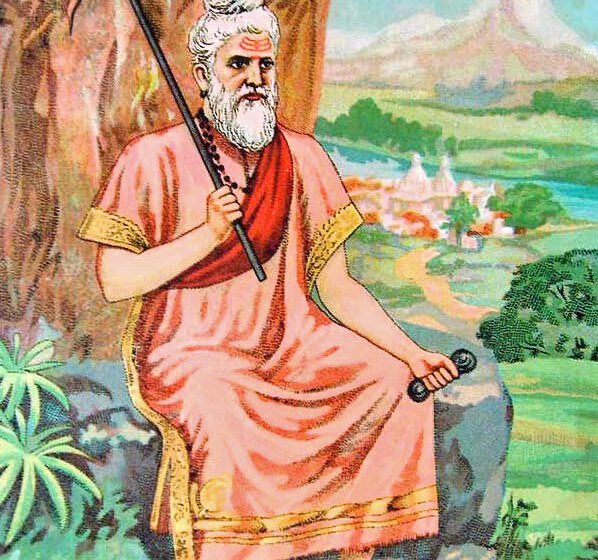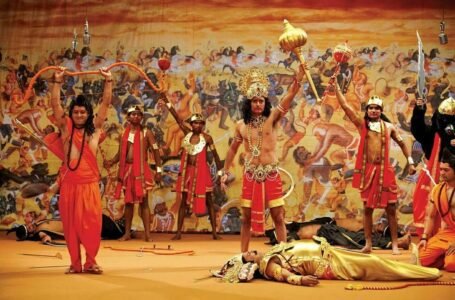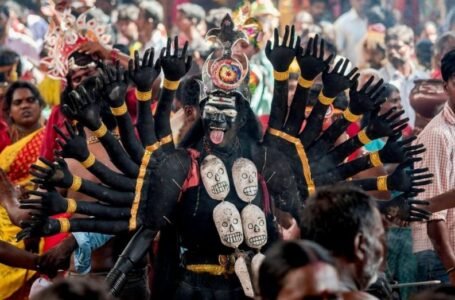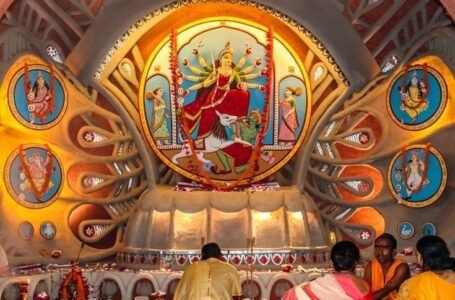The One Who Makes Ganpati Bappa “Morya”

-Bhoomee Vats
Every year, September sees the entirety of Mumbai on the streets, celebrating with high enthusiasm the festivities that revolve around Lord Ganpati. Not just limited to Mumbai, the festival of Ganesh Chaturthi is celebrated throughout India, making the whole nation echo with the chant of, “Ganpati Bappa Morya!” These three words, even though used almost daily and taken lightly, hold years of history; they connect years of devotion and prayers with the modern world today. The festival lights up every Indian household as Lord Ganpati takes over the workings of the universe and brings happiness to every nook and cranny of every street.
The word “Morya” is not just a saying but a word that carries the legacy of the most prominent devotee of Lord Ganesha. The chant expresses devotion, invokes the Lord’s blessings, and serves as a reminder of the spiritual bond between God and devotees. Named after Lord Moreshwar, a local deity form of Lord Ganesha, Morya Gosavi was born about 50 kilometres from Pune in a small town of Morgaon. From his childhood, Morya showed great devotion and spiritual tendencies, but this was not all. What followed next were some miracles that left everyone in shock.
The Miracles
Today, Lord Ganesha is one of the most precious and worshipped deities in Maharashtra. Still, it was due to Morya Gosavi that the worship of the benevolent Ganpati Bappa was popularized in the region. Born in Morgaon, which lies 50 km from Pune, Morya Gosavi was named after a local form of Lord Ganesha, Lord Moreshwar (Ganapati) of Morgaon. This Ganapati temple is one of the most sacred and precious Ashtavinayak temples (a group of eight important Ganapati temples around Pune). Just like other saints of India, accounts of Morya Gosavi’s life include several such legends and miracles. Since it is difficult to trace the exact dates and period of his life, scholars place him between the 13th and 17th centuries CE. From a very young age, Morya Gosavi showed his inclination towards spirituality and worshipping the divine. He is said to have performed several miracles and also witnessed many divine revelations in his lifetime.
One such famous story is about how Morya Gosavi restored the sight of a blind girl when he was out to take his daily bowl of milk from the milkman. It is said that the girl regained her sense of sight as soon as she touched the place where Morya had been standing. Morya also gave huge importance to anna-dana (serving food). The stories of his miracles and deeds spread like wildfire throughout the nation and attracted many people, who came to pay respects to the saint. Morya Gosavi eventually settled in Chinchwad near Pune, after a divine revelation of Ganesha. One version of the legend states that Morya had grown old and, hence, was finding it hard to travel to Morgaon, and therefore Lord Ganesha appeared to him and told him to build a temple at Chinchwad.
The Ganpatya Sect
Out of the five major sampradaya or sects of Hinduism, Vaishnavism (Vishnu worshippers), Shaivism (Shiv worshippers), Shaktism (Shakti or Devi worshippers), and the Saura sect (Sun worshippers), the Ganapatya sect is one of the major ones. Even though the majority of the population follows Shaivism, Shaktism, and Vaishnavism, the Ganapatya sect, whose followers believe that Lord Ganesha is the ‘Supreme God’, is not as popular as other sects. The earliest reference to Ganapati can be found in the major texts like that as the Rigveda and Aitareya Brahmana. The sect, as a form of devotion and worship, came into being in the 5th-6th century CE and reached the peak of its popularity in the 10th century CE. The 13th century CE text, Sankaradigvijaya (biography of Adi Sankaracharya), mentions the worship of Ganesha in six different forms. The six different forms include Mahaganapati, Haridra Ganapati, Uchchhishta Ganapati, Navneet Ganapati, Swarna Ganapati, and Santana Ganapati, all of which are worshipped in different ways.
Mahaganapati, just like the name suggests, is the ‘Supreme’ aspect of Lord Ganesha. He is depicted in red with ten arms, with Shakti by his side. Haridra literally translates to ‘turmeric’; therefore, this form of Ganapati is yellow, wearing yellow garments. Devotees of the Haridra form of Ganapati wear a symbol of Ganesha’s head and a broken tusk on their arms. The Uchchhishta Ganpati is the tantric aspect of Ganesha. Devotees of this form wear a red mark on their foreheads. This form of Lord Ganapati is shown either in red, blue, or black, with four or six arms, and also with Shakti by his side. Navneet means ‘butter’, a form of Ganpati representing his soft and benevolent nature. Swarna Ganapati and Santana Ganapati are the peaceful aspects of Ganapati. Although the six sects have very different kinds of worship, the common belief is that Ganesha is the Supreme God. He is Eternal and the Creator of the universe. Morya Gosavi was a pivotal figure in the Ganapatya sect, focusing on Ganesha as the supreme deity. He was a propagator of this tradition in Maharashtra and is considered the chief spiritual progenitor of the sect, popularizing Ganesha worship at temples in Morgaon and Chinchwad.
Conclusion
The legends and stories state that Morya Gosavi used to travel from Chinchwad to Morgaon on foot every month to pray and worship at the Moreshwar temple that was present there. One time, he arrived after the temple was closed, but the locks miraculously fell away, making it possible for him to worship Lord Maryureshwar. Eventually, Morya Gosavi attained sanjeevan (living) samadhi at Chinchwad itself. According to one legend, his son Chintamani built a Lord Ganapati shrine on his samadhi in the 17th century CE. It is said that Chintamani was addressed as ‘Dev’ by the popular Saint Tukaram, and it also went on to become the family surname.
Today, the Shri Morya Gosavi Ganapati Mandir at Chinchwad, a few meters away from Mangalmurti Wada, is a place of pilgrimage, with the samadhis of all seven Devs, including Morya Gosavi, revered by devotees. During the four days from Margashirsha Vadya Tritiya to Shashti, elaborate celebrations are observed in the temple on the occasion of Morya Gosavi’s Punyatithi, the day he attained sanjeevan samadhi.


